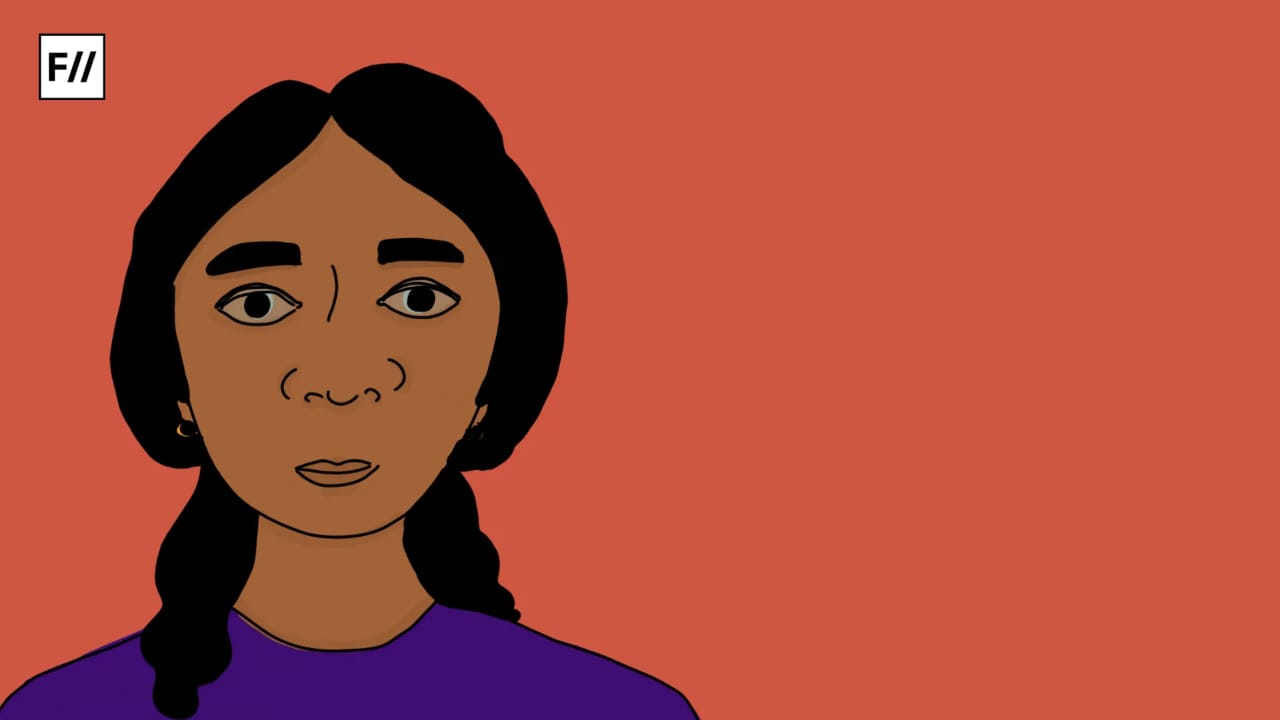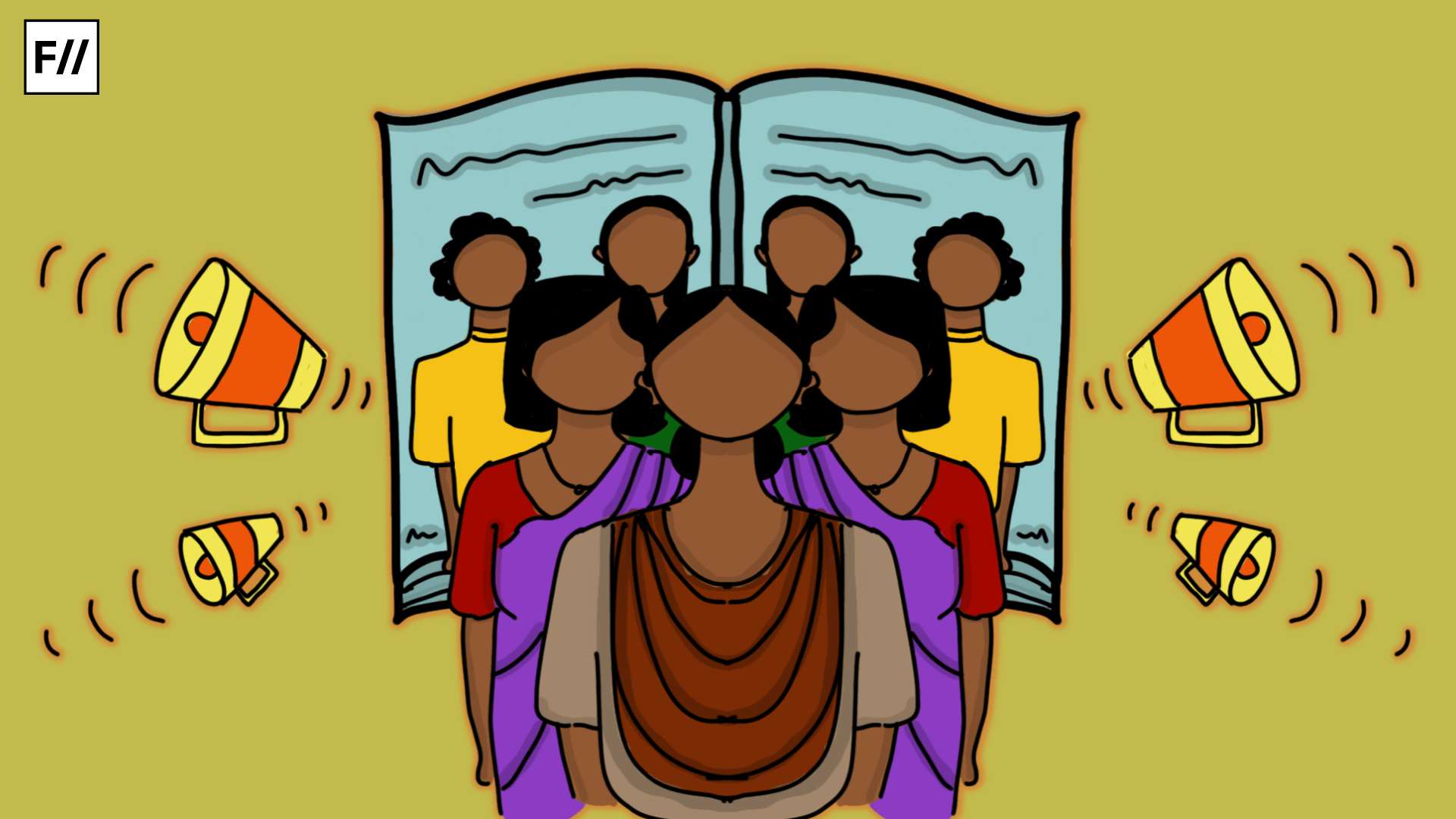The onset of lockdowns and self-isolation measures across the world in response to COVID-19 has been accompanied by a sharp rise in the incidence of domestic violence. The situation in India has been no different, with official responses having been uneven at best. In an effort to highlight and mitigate this worrying phenomenon, the India chapter of the International Advertising Association (IAA), in partnership with the Indian Merchants’ Chamber (IMC), a national trade and commerce association, and Laadli, a media initiative run by the non-profit Population First, launched a national campaign against domestic violence. The campaign’s messaging comprised two posters publicising domestic violence helpline numbers that have been circulated in newspapers and across various social media platforms.
Advertisements, like any media, carry tremendous potential to influence perceptions and frame societal roles, even as they might draw from prevalent, if problematic, assumptions. A campaign that focuses on drawing attention to domestic violence must be particularly careful to present a sensitive understanding of gender relations. However, while the IAA campaign appears well-intentioned, an analysis of the posters reveals that they contain a number of potentially harmful gendered messaging devices.
The first ad, for example, exhorts its (presumably cis-male, heterosexual) audience to ‘Be a man. Cook. Clean. Wash. Vent your frustration by scrubbing dishes. End the boredom by cooking a new dish.’ By framing reproductive labour simply as a means to tackle the tedium of self-isolation, this language simultaneously casts it as optional. In other words, the implication here is that men can step into and out of the performance of domestic labour as an agential act of self-improvement.
The first ad, for example, exhorts its (presumably cis-male, heterosexual) audience to ‘Be a man. Cook. Clean. Wash. Vent your frustration by scrubbing dishes. End the boredom by cooking a new dish.’ By framing reproductive labour simply as a means to tackle the tedium of self-isolation, this language simultaneously casts it as optional. In other words, the implication here is that men can step into and out of the performance of domestic labour as an agential act of self-improvement.
Moreover, with women carrying a disproportionate amount of responsibility for domestic work during this crisis even as many of them continue executing income-generating labour, such messaging serves to powerfully reinforce gender stereotypes. This can be seen even more starkly in a recent ad by Amul, featuring the hackneyed and unrealistic portrayal of an effortlessly multi-tasking ‘mom’. Such content typecasts women as possessing an innate ability for domestic work, rendering them the default household members to carry out these tasks.
Also read: How Is Domestic Violence Linked To The COVID-19 Lockdown?
In fact, these gender stereotypes can be detrimental to men as well; the IAA poster, for example, associates reproductive labour with heteronormative interpretations of masculinity, using statements such as ‘Do the man thing’. This language of toughness and machismo effectively aims to expand the alpha-male model of masculinity to encompass some forms of (non-compulsory) domestic work, rather than dismantling these exclusionary frameworks.
Recognising the danger of such branding initiatives, the Advertising Standards Authority in the UK recently implemented a rule that banned gender stereotyping ads. Besides sexist and discriminatory portrayals of women, this ban also extends to ads that depict men as being incompetent at housework, or mock them for not adhering to narrowly-defined standards of acceptable ‘masculine’ behaviour.
Yet, the most egregious language in the IAA campaign is embedded in its direct references to domestic violence. The first poster continues, ‘During the lockdown, beat the virus to pulp [sic], not your wife.’ Here, using the language of violence in a campaign meant to counter violence is emphatically counter-productive and potentially triggering for survivors. Moreover, evoking the image of the crusading man valiantly fighting the virus and emerging victorious is not only far-fetched, but also painfully reductionist. To put this more simply: does being a man require beating something, or someone, up? This is reflective of a broader trend, where the gendered language of war and violence has been frequently used in official discourse around the epidemic.
In fact, these gender stereotypes can be detrimental to men as well; the IAA poster, for example, associates reproductive labour with heteronormative interpretations of masculinity, using statements such as ‘Do the man thing’. This language of toughness and machismo effectively aims to expand the alpha-male model of masculinity to encompass some forms of (non-compulsory) domestic work, rather than dismantling these exclusionary frameworks.
Abruptly shifting its focus, the first poster concludes with a call for neighbours to report domestic violence, leaving us with a muddled understanding of its core message.
In contrast, the second poster in the series does focus more directly on reporting. However, by placing the onus of reporting primarily on survivors (‘Report domestic violence to the authorities immediately. Don’t suffer in silence’, it urges), it ignores current social realities that have made this very task even more challenging.
As survivors find themselves trapped with their abusers, with few opportunities to make distress calls, organisations are devising increasingly creative ways to enable their access to support services. In this climate, a campaign that invokes solidarity and assistance, rather than signalling the responsibility of survivors to report violence, would have been more effective. This misdirected messaging is only exacerbated by the posters’ usage of the standard self-isolation message, ‘Stay home. Stay safe’, which comes across as callous when the home has become a profoundly unsafe space for survivors.
We are left to ask, what is the purpose of social awareness campaigns on gender issues that are not rooted in feminist principles? Rather than promoting a deeper understanding of the structural reasons that contribute to the occurrence of domestic violence, this campaign links it unambiguously to COVID-19 by referring to it as ‘corona violence’.
Also read: Stakeholders’ Response To Domestic Violence During Lockdown
This obscures two facts: firstly, that domestic violence stems from patriarchal relations of power in the home, rather than a single extreme event; and secondly, that domestic violence was a pandemic of its own long before the outbreak of Coronavirus. In this time of great uncertainty, what is certain is that any media campaign confronting domestic violence must adopt a nuanced and sensitive approach anchored in an understanding of these systemic challenges, while ensuring that this is conveyed through a clear and concise message that emphasises support and care.
Shakthi is a postdoctoral researcher at IIT Madras, where she thinks, reads and writes about mobilities, intersectional identities and feminist theory. You can find her on Twitter.





well written and much needed analysis. Women are always the first victim of any emergency at personal or global level. we need a strong and rooted campaign using various media to counter the patriarchal depiction that is rampant everywhere. I feel the need to differentiate between “difference” and “discrimination”. The two sexes are different by nature, and no feminist is trying to fight that. The fight is against the “discrimination” based on gender identities. I often find that many confuse between the two and hence either justify the discrimination under the guise of difference, or paint feminists as people who are going against nature’s order.
One request to the website- the main text font of the article is too thin and light. makes it visually difficult to read. kindly look into the ease of reading by making necessary changes to the font size, type and colour.